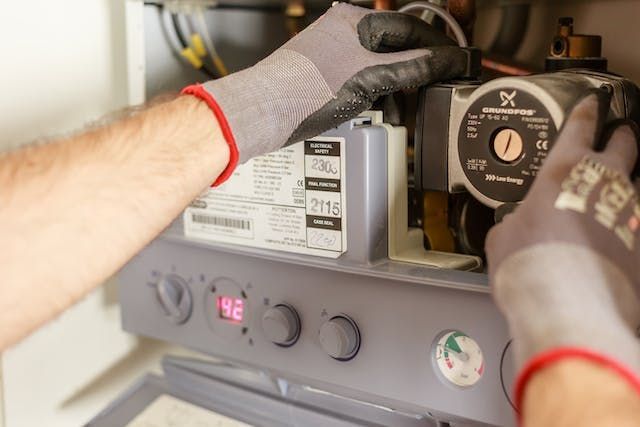How to Prepare Your Rental for Winter

As a savvy landlord, you know that rental maintenance is one of your key responsibilities. It’ll ensure you meet core habitability requirements while helping you attract and retain quality tenants, among other things.
Yet, rental maintenance is a year-round activity. And with each season comes a unique set of challenges you must grapple with. The winter season, in particular, can be particularly challenging. It’s the season that wreaks the most havoc on properties all across the country.
In this article, we’ll walk you through 6 tips on how to winterize your rentals and prepare for winter.
Why Should You Winterize Your Rental?
Winterizing a property simply means taking proactive steps to ensure your home and all its components are protected against harsh cold temperatures. The following are some benefits to doing it on your rental.
- Provide some cost savings on electric bills. Winter is usually tough on energy bills. But since winterization involves insulating your property against cold, it’ll help minimize energy use.
- Reduce the cost of repairs. Winterization involves a few crucial preventative maintenance activities. Including, inspecting and preparing the HVAC system, chimney, fireplace, and plumbing system. This helps minimize the cost of repairs once the cold weather sets in.
- Identify and address major disaster risks. An example would be a major ice event which could damage roofs, pipes, and gutters. Luckily, a good winterization process can help avert such issues by helping address and fix any potential issues ahead of time.

With that in mind, winterizing your rental isn’t a magic trick to zero issues during the cold winter months. It’ll, however, significantly lessen any potential negative effects from occurring, increasing your property’s longevity.
6 Tips on How to Properly Winterize Your Rental Property
Fortunately, winterizing a rental property isn’t a complicated process. It can be a fairly simple one if you implement the following proven strategies.
Clear any Blockages in the Gutters
Blocked gutters can cause significant damage during the cold weather. One way damage can occur to your rental is through ice dams. Ice dams occur when snow melts on a warm roof and refreezes in the colder gutters.
When that happens, water is prevented from draining, causing it to back up under the shingles. The trapped water may then seep into the roof and eventually lead to mold, rot, or leaks.
Another way gutters can cause investment property damage is when water freezes in clogged gutters. This leads to expansion in the gutters, which can lead to cracks or even detach the gutters from the property.
To prevent any of these scenarios, keep your gutters and downspouts clean and free of debris. This will ensure water flows freely from the roof to the ground.
Inspect the Water Heater
On-time maintenance of your water heater is key, especially before the onset of the cold weather. This will help the system run as efficiently as possible and keep utility bills manageable.

Luckily, maintaining the water heater is fairly easy and inexpensive. You just need to flush it before the cold weather sets in, and add insulation around it to conserve heat.
Of course, work with an experienced HVAC technician to ensure quality workmanship.
Adjust Your Ceiling Fans
Most people only use ceiling fans to create a cool breeze during the warm months. But unbeknownst to most people, ceiling fans can also be helpful during the cold season. You’ll only have to reverse them.
During the hot months, ceiling fans spin counterclockwise. This helps create a downdraft, pushing cool air down towards the floor. The result is a 4-degree temperature difference.
During the cold months, you should adjust the ceiling fans clockwise. This should help create an updraft, gently pushing warm air up and then down into the room. Ideally, the fan should be on low speed for optimal results. This should help you make up to 15% energy savings!
Winterize Windows & Doors
It’s through the windows and doors where most of the energy loss occurs. The following are some telltale signs that you need to winterize your windows and doors:
- Cold air seeps in around the edges of your doors and windows.
- Moisture buildup or fogging up of windows, even when the inside isn’t humid.
- Relatively high energy bills.
- Difficulty keeping your home warm, even after turning up the thermostat.
- Visible cracks in the window frames or panes.
- Deteriorating or warped window or door frames.
- Damaged or worn weather stripping.

If you notice any of these issues, get expert help immediately before the cold weather sets in. This will help improve energy efficiency and boost the comfort of your tenants.
Check the Roof
Fall is the best time to inspect the condition of your property’s roof. This is crucial in ensuring it works perfectly to prevent water damage during the cold months.
The simplest and quickest way to check the condition of your roof is by climbing up the attic and looking up. Check for any signs that could point to water damage, such as signs of daylight poking through or water staining on plywood.
Preferably, work with a roofing professional for the best outcome. They will know where and what to look for.
Hire a Property Manager
When self-managing your rental, there is only so much you can do. A property manager, on the other hand, can help you overcome any challenges regarding your rental property.
From rental maintenance, to property advertising, to tenant screening, to on-time rent collections.
Conclusion
There you have it – proven tips on how to prepare your rental for winter. This can not only help protect your property’s value, but also in keeping your tenant happy and comfortable.
For expert help in this regard or overall management of your Charlotte rental property, look no further than
Dawson Property Management. Our team is committed to helping you maximize profits. Get in touch to learn more!







